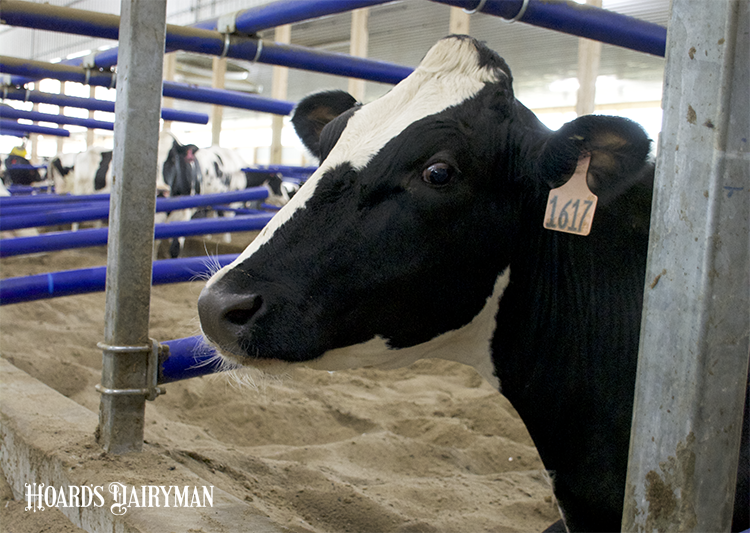
The September Hoard’s Dairyman webinar title posed the question, “Inflammation: Friend or foe?” Presenter Barry Bradford’s response to that question was, “It’s both.”
Inflammation in humans or animals comes with signs of swelling, pain, redness, and fever. During the webinar, the Michigan State University professor explained the positive and negative ways inflammation impacts dairy cattle.
On the con side, he shared that inflammation can directly suppress milk production. It promotes joint problems and lameness in cows, and if extreme, it can lead to early pregnancy loss.
On the other hand, “Inflammation is a critical component of immune response,” Bradford noted. That’s because inflammation is triggered by a pathogen or tissue trauma and is a key mechanism to activate immune defenses.
Inflammation is is also necessary for the normal birthing process. It stimulates the release of proteases that loosen the cervix, it promotes contractions, and it stimulates prostaglandin release. “We know inflammatory signals are needed for the process of giving birth,” Bradford stated.
Furthermore, Bradford said that inflammation is simply a body’s natural response. “Frankly, it is part of everyday biology, so we can’t completely obliterate it,” he said.
Our goal as dairy producers is to help animals maintain a balance between tolerance and response when faced with an immune challenge and enable cows to have an appropriate resolution to inflammation. Cows that are slow to resolve an inflammatory reaction are more likely to face metabolic diseases and infertility.
How can this be done? “We think dietary and pharmaceutical solutions hold a lot of promise,” Bradford said.
He shared studies that yielded positive results when nonsteroidal anti-inflammatory drugs (NSAIDs) were administered to cows postpartum. In the United States, however, using NSAIDS for the sole purpose of preventing inflammation is an offlabel use of the product and would require veterinary oversight. For that reason, Bradford highlighted dietary means that can address inflammation.
“The bright side is that nutrients can act as signals,” he noted. A growing body of information over the past few decades shows us that all kinds of nutrients, from fatty acids to sugars to vitamins and minerals, can change the function of cells and tissues in the body, and Bradford said we can use this to our advantage.
In one study Bradford shared, adding more omega-3, which acts as an anti-inflammatory, improved milk yield and peak milk production while maintaining the cows’ energy balance. In another trial, Chinese skullcap extract, an herbal treatment, fed for the first 60 days in milk elevated milk production through the entire lactation.
While these feeding strategies come at a cost, Bradford advised looking at it as an investment over the entire lactation, not a cost per day. If feed supplements cost $10 to $25 per lactation, he said it is similar in price to treatment for transition cow diseases that can hopefully be prevented.
To learn more about inflammation and strategies to help cows resolve it, view the September Hoard’s Dairyman webinar “Inflammation: Friend or foe?”
This webinar was sponsored by O&T Farms.








